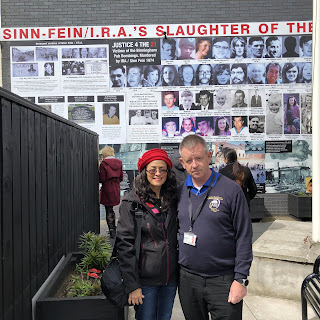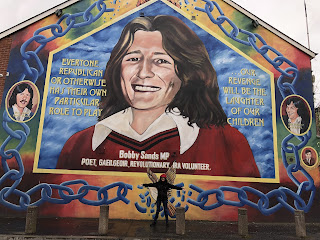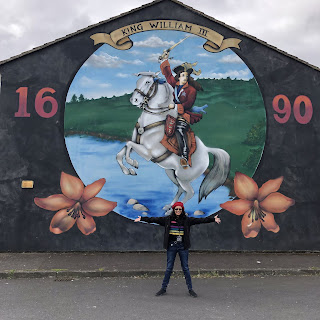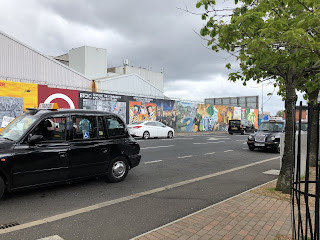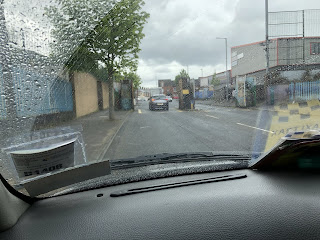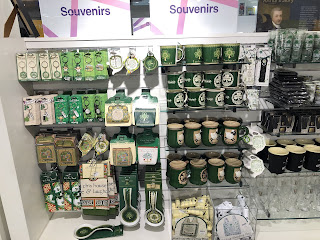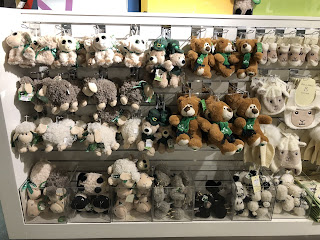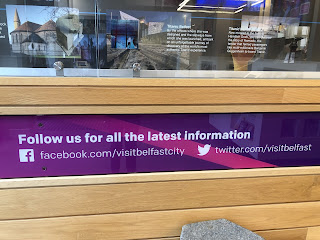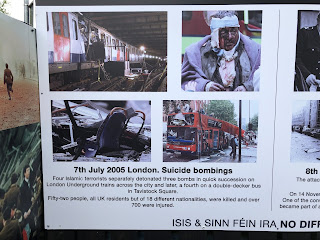Cruise day #20–Belfast, Northern Ireland. By the way, this makes my 100th nation visited! Yay!
Nestled between mountains and the coast, beautiful Belfast is the capital city of Northern Ireland. Founded in the 17th century, by Protestant English and Scottish immigrants, this city prospered in linen manufacturing, tobacco production, rope-making and shipbuilding. Of note, it was the worlds largest linen manufacture during the industrial revolution. The RMS titanic was built there from 1909-1911. Always a part of great Britain, Queen Victoria officially granted it city status in 1888.
A love hate relationship between Ireland and England has persisted for more than 700 years. The Irish fought periodically against English rule during this time.
Irish Catholics were especially mistreated, were relegated to second class-status and we’re not even allowed to own property or guns. After the Easter uprising in Dublin in 1916, the Irish launched a multi/year final campaign to secure independence. Finally, in 1922, Ireland gained its independence by a narrow vote of 65 to 57.
Sectarian fighting within Ireland, among the Catholic, nationalist, Republicans versus the Protestant, unionist, loyalists, resulted in a partition of the country in 1922.
This might remind you of the partition of India and (Muslim) Pakistan.
The newly formed independent, largely Catholic, nation of The Republic of Ireland (or Eire,) in the south was separated from Northern Ireland which remained loyal to England. Northern Ireland is still a part of great Britain. The independent Republic of Ireland uses euros and Northern Ireland uses British pounds and is part of the UK and Great Britain.
When Northern Ireland was first formed in 1922, a large majority were Protestant. Today 45% are Catholic and 48% are Protestant. The number of non-religious citizen continues to grow.
Before the 1998 peace deal that ended the troubles – – a 30 year period of conflict in northern Ireland – – many travelers were scared away from Belfast because of it tales of unrest. It was considered one of the most violent cities in the world as brothers were fighting brothers and I recall those days hearing news of bombings and shootings almost weekly. Both sides of the fight were filled with extremist more than they were religious team members. With the city now peaceful, revitalized, and rejuvenated, tourists can safely explore the city’s past. One way to do this is by taking a guided tour called a “black taxi” tour, that highlights political-themed street art, Catholic versus Protestant neighborhoods, and that specifically visits the Shankill and Falls Road murals and the Peace Wall. Each tour guide lived through “the Troubles” and tells the first time story from a neutral viewpoint. I was excited to have the opportunity to book one of these tours.
Hugh, my “black-taxi” driver and tour guide picked me up at 10:50 at the port. He gave me a two hour and 15 minute tour. It was supposed to be a 90 minute tour. I have taken Tours all over the world this was one of the best and also one of the most thought-provoking.
I can’t believe that the Catholics and the Protestants are still living separately and there is literally a gate, separating the communities, gets closed every night when it gets dark. These two factions still despise each other so much that they don’t want to co-exist. Of course, it’s an age-old story of people in power choosing to divide and conquer. They are disaffected, working class people who’ve been pitted against one another. Their neighborhoods, homes, and commercial centers, look identical; they have the same ancestors; yet, they are bitter rivals. In the 1960s, power mongers re-activated the simmering decades-old animosities and that led to the 30+ years of violence among the groups. This period was referred to as “the troubles.” I visited the two communities most affected by the troubles: the Protestant /Unionist/Loyalist Shankill Road and the Catholic/Nationalist/Republican Falls Road.
From the mid-1960s through the late-1990s, Belfast was infamously known as a violent and dangerous place to live. They used to have one cruise ship a year; now, they greet 150 ship visitors.
Ironically, Shankill houses more churches per capita than any other city!! The story of using violence in God’s name will seemingly never end.
The highlight of the tours are creative, intricate, and controversial murals scattered across the Shankill and Falls Road communities. The mural artists consider themselves activists first and they portray emotionally charged interpretation of their side of the story.
The protestants consider themselves British and the Catholics consider themselves Irish. These communities are truly divided.
There is a long notorious history of the protestants dominating society and treating the Catholics as second-class citizens. The Police force and freemasons where exclusively protestant.
Both sides think of themselves as freedom fighters and protectors, not murderers or terrorists.
I saw two separate memorials dedicated to the fallen heroes from each side. The Protestant Memorial epitomized victim mentality and focused on the gruesome violent acts of the IRA. The focus of their message was comparing the IRA to ISIS.
The Catholic Memorial was reflective and quietly sad. Instead of featuring bold images of victims of violent acts, it simply list names of heroes and there are beautiful flower arrangements and Celtic crosses surrounding the monuments.
The colorful mural filled Peace Wall separates the two communities. I was shocked to hear that the wall does not reflect a desire for peace. Rather, it reflects the fact that they need this wall to KEEP the peace. The customer is to sign the wall. I signed it with my name, a heart, and a peace sign.
I listened attentively as Hugh gave a lucid historical description sharing insights that can only come through a local who lived it. Periodically, I would try to guess which side he was on. At the end, I confirmed he grew up Catholic. His dad had purchased a house in the Protestant neighborhood when he was a boy. The government seized his house and they were forced to move into a Catholic neighborhood. He presented with such neutrality that I heard no bitterness and his heart. I took part of a walking tour of Center City later. That tour guide, Richard, is also born and raised Catholic but his grandparents were Protestant.
This was a fascinating, emotional, and thought-provoking tour. I think these tour should be required of all global citizens.
Thank you for reading my lengthy post. I will correct the grammar and punctuation when I return home and have access to a real keyboard.








